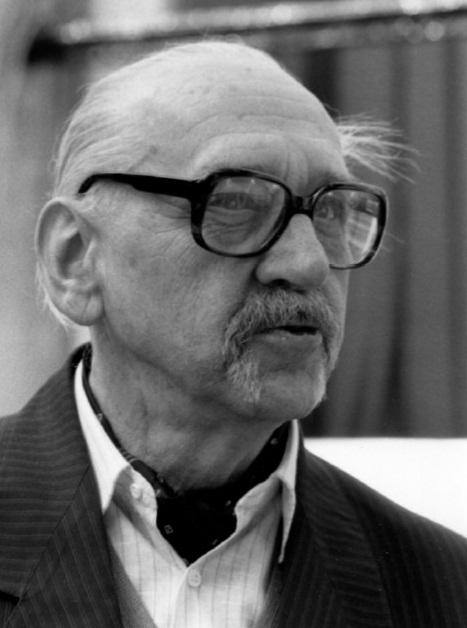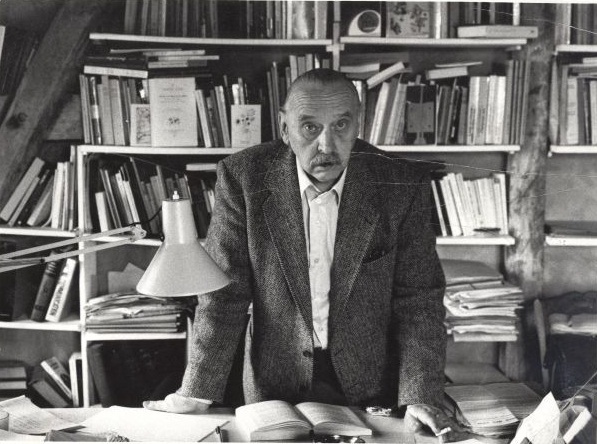<Back to Index>
- Semiotician
Algirdas Julien Greimas,
1917
PAGE SPONSOR


Algirdas Julien Greimas (born Algirdas Julius Greimas; 9 March 1917 - 27 February 1992), known among other things for the Greimas Square, is considered, along with Roland Barthes, the most prominent of the French semioticians. With his training in linguistics, he added to the theory of signification and laid the foundations for the Paris School of Semiotics. Among Greimas's major contributions to semiotics are the concepts of isotopy, the actantial model, the narrative program, and the semiotics of the natural world. He also researched Lithuanian mythology and Proto - Indo - European religion, and was influential in semiotic literary criticism.
Greimas's father Julius Greimas, a teacher and later school inspector, was from Liudvinavas in the Suvalkija region. His mother Konstancija, née Mickevičiūtė (Mickevičius), a secretary, was from Kalvarija. They lived in Tula, Russia, when he was born and returned with him to Lithuania when he was two years old. His baptismal names are Algirdas Julius, he used the French version of his middle name, Julien, while he lived abroad. He did not speak another language than Lithuanian until preparatory middle school where he started with German and then French, which opened the door for his early philosophical readings in high school Friedrich Nietzsche and Arthur Schopenhauer. After attending schools in several towns, as his family moved, and finishing Rygikių Jonas High School in Marijampolė in 1934, he studied law at Vytautas Magnus University, Kaunas, and then drifted toward linguistics at the University of Grenoble, from which he graduated in 1939 with a paper on Franco - Provençal dialects. He hoped to focus next on early medieval linguistics (substrate toponyms in the Alps), but the beginning of World War II returned him to Lithuania for military service, where he then taught, worked as an editor, and published literary reviews and essays on culture.
In 1944 he enrolled for graduate study at the Sorbonne in Paris and specialized in lexicography, namely taxonomies of exact, interrelated definitions. He wrote a thesis on the vocabulary of fashion (a topic later popularized by Roland Barthes), for which he received a PhD in 1949.
Greimas began his academic career as a teacher at a French Catholic boarding school for girls in Alexandria in Egypt, where he would take part in a weekly discussion group of about a dozen European researchers that included a philosopher, a historian, and a sociologist. Early on, he also met Roland Barthes with whom he remained close for the next 15 years. In 1959 he moved on to universities in Ankara and Istanbul in Turkey, and then to Poitiers in France. In 1965 he became professor at the École des Hautes Études en Sciences Sociales (EHESS) in Paris where he taught for almost 25 years. He co-founded and became Secretary General of the International Association for Semiotic Studies.
Greimas died in 1992 in Paris, and was buried at his mother' resting place, Petraiūnai Cemetery in Kaunas, Lithuania (his parents were deported during the Soviet occupation, his mother managed to return in 1954, his father perished and his grave is unknown, but he has a symbolic tombstone at the cemetery). He was survived by his wife Teresa Mary Keane.
Greimas's first published essay "Cervantes ir jo don Kichotas" ("Cervantes and his Don Quixote") came out in the literary journal Varpai, which he helped to found, during the period of alternating Nazi and Soviet occupations of Lithuania. Although a review of the first Lithuanian translation of Don Quixote, it addressed partly the issue of one's resistance to circumstances even when doomed, defiance can at least aim at the preservation of one's dignity (Nebijokime būti donkichotai, "Let's not be afraid to be Don Quixotes"). The first work of direct significance to his subsequent research was his doctoral thesis "La Mode en 1830. Essai de description du vocabulaire vestimentaire d' après les journaux de modes [sic] de l'époque" ("Fashion in 1830. A Study of the Vocabulary of Clothes based on the Fashion Magazines of the Times"). He left lexicology soon after, acknowledging the limitations of the discipline in its concentration on the word as a unit and in its basic aim of classification, but he never ceased to maintain his lexicological convictions. He published three dictionaries throughout his career. During his decade in Alexandria, the discussions in his circle of friends helped broaden his interests. The topics included Greimas's early influences the works of the founder of structural linguistics Ferdinand de Saussure and his follower, Danish linguist Louis Hjelmslev, the initiator of comparative mythology Georges Dumézil, the structural anthropologist Claude Lévi - Strauss, the Russian specialist in fairy tales Vladimir Propp, the researcher into the aesthetics of theater Étienne Souriau, the phenomenologists Edmund Husserl and Maurice Merleau - Ponty, the psychoanalyst Gaston Bachelard, and the novelist and art historian André Malraux.
Greimas headed semiotic - linguistic research, laying the foundations for the Paris School of Semiotics. Among Greimas's major contributions to semiotics are the concepts of the Semiotic Square, isotopy, the actantial model, the narrative program, and the semiotics of the natural world. He was influential in semiotic literary criticism.
He later began researching and reconstructing Lithuanian mythology. He based his work on the methods of Vladimir Propp, Georges Dumézil, Claude Lévi - Strauss, and Marcel Detienne. He published the results in Apie dievus ir mones: lietuvių mitologijos studijos (Of Gods and Men: Studies in Lithuanian Mythology) 1979, and Tautos atminties beiekant (In Search of National Memory) 1990. He also wrote on Proto - Indo - European religion.